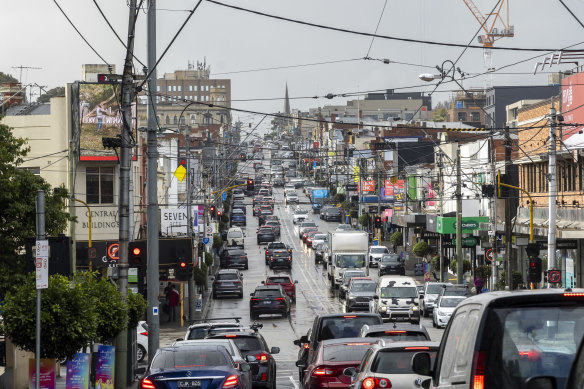- Exclusive
- Politics
- Victoria
- Property development
This was published 8 months ago
More suburbs to get high-rise towers in expansion of fast-track housing plan
The state government wants to double the number of areas where suburban high-rise towers can be built, in an expansion of its plan to increase housing density in Melbourne and squeeze tens of thousands of new homes into so-called activity centres.
Speaking to The Sunday Age ahead of her one-year anniversary as premier, Jacinta Allan said one of her key priorities for the next 12 months would be finding new ways to boost the delivery of homes.

Premier Jacinta Allan says the government can go further on its promise to deliver more homes in suburban activity centres.Credit: Eamon Gallagher
The state has not indicated where the next tranche of activity centres will be, and a final decision on a number has not yet been made.
But a government source, speaking anonymously to detail confidential discussions, said the state was considering doubling the current plans for 10 new activity centres to 20.
Allan said she believed the government could build on its policy to boost housing across the 10 activity centres outlined in its landmark housing statement, released a week before Daniel Andrews resigned and Allan was elevated to the leadership.
“We’re going to double down and over the next few months, we’re going to outline new key policy changes to build even more homes,” Allan told The Age.
“We should go further. There is an opportunity to go further because it makes sense.”
The 10 existing activity centres are Broadmeadows, Camberwell Junction, Chadstone, Epping, Frankston, Moorabbin, Niddrie, Essendon North, Preston and Ringwood.
The plan is to build an extra 60,000 homes by 2051, increasing density in established suburbs near transport and business centres – and drastically changing the way these suburbs look in coming decades.
New housing developments up to 20 storeys high would be fast-tracked, construction streamlined, and locals would lose the power to appeal residential developments.
The housing statement set a target of delivering 80,000 homes a year, or 800,000 over a decade.
This goal remains a major challenge, with organisations such as the Housing Industry Association forecasting just over 50,000 dwellings will be started in 2024, and only slightly more in 2025.
Allan said Victoria was leading other states in building approvals and completions, but she wanted to do more.
People want to live close to connections that get them to school, work, and family and friends easily, safely and efficiently, she said.

Camberwell is one area that’s been earmarked as an activity centre to add thousands more homes.Credit: Wayne Taylor
“That’s what the activity centre program is also about, leveraging off the investment we’ve made in removing level crossings, building the Metro tunnel, upgrading road and rail, and understanding that those [services] are a centre that can be a magnet for more people,” she said.
“If you talk about equality of opportunity – the growing gap between young kids who can’t get into the housing market because they can’t access the bank of mum and dad, because that’s not an option for them, that’s just not fair.
“We’ve got to make sure that we lift the number of homes that we’re building. Lifting supply drives that affordability outcome, and it also drives people getting the dignity of a roof over their head.”
During the 12 months to the end of June this year, Victorian councils approved a total of 51,656 houses, flats and townhouses for construction. This was the lowest financial year result since 2012-13.
The government plans to deliver the extra 60,000 homes by fast-tracking high-rise housing developments and overhauling planning rules for new townhouses and apartments up to six storeys high within a 10-minute walk of the designated hubs.
Carolyn Viney, chief executive of super-fund-backed housing developer Assemble, said all investment decisions were based on certainty, and the activity centres provided this to developers who were interested in higher-density projects.
“If you’re buying a site from scratch, then you actually want line-of-sight to what can I do with that piece of land.
“Being able to get through an approval process relatively quickly because there is certainty about what you can do there is critical.
“Victoria has got a huge advantage relative to New South Wales with the fact that we don’t spend, typically five, 10 and 15 years on rezoning things.
“What the government is doing – putting more certainty into the macro planning of Melbourne – I think will position Melbourne even more attractively than Sydney, for all those reasons.”
Under the government’s activity centre plan, the planning process will be fast-tracked from up to five years to about 12 months.
Residential construction would be streamlined for developments that meet their new height limits, which vary between three and 20 storeys once enforced.
Each activity centre would have different rules to suit the character of the neighbourhood, and heights would taper off in a broader “catchment area” around these denser streets.
The Morning Edition newsletter is our guide to the day’s most important and interesting stories, analysis and insights. Sign up here.